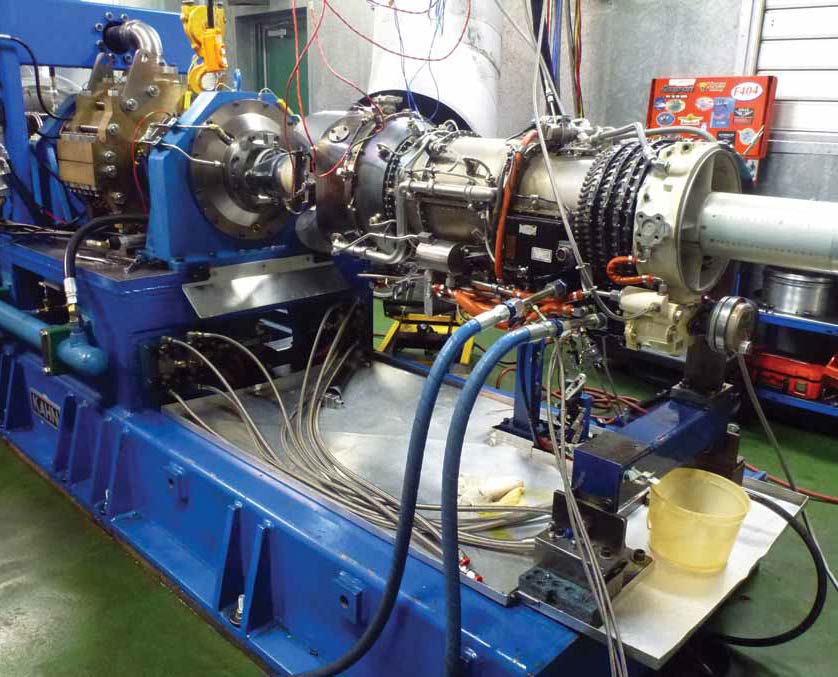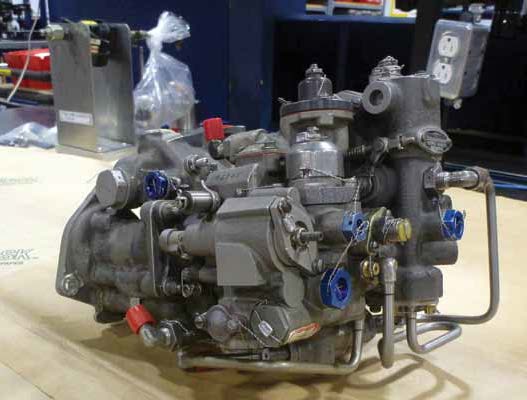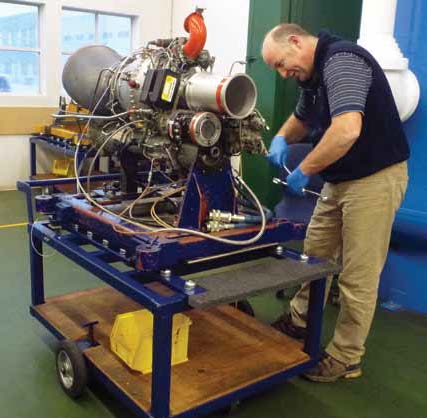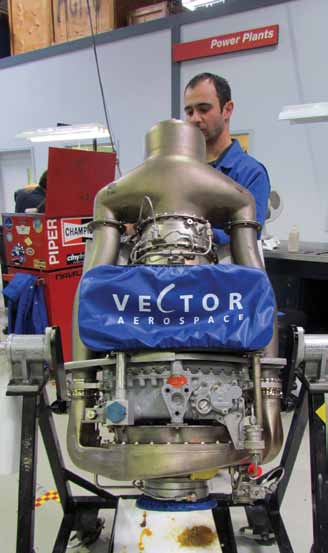
Suck, Squeeze, Burn and Blow


Now that I have your attention, let’s talk about the care and feeding of helicopter turbine engines. The suck, squeeze, burn and blow are the four steps that make a turbine engine work. A compressor in the engine’s front spins fan blades that suck air into the engine and compresses (squeezes) the air. This compressed air provides a more efficient combustion. The air leaves the compressor stage and goes into the diffuser. The diffuser guides the air into the combustion chamber. Fuel is added in the combustion chamber and a powerful ignition occurs. This ignition forces the burnt-fuel-and-air mixture through turbine blades, which spins the drive shaft. The gases then exit the exhaust pipe.
Regulatory Standards

Basic standards for engine maintenance are formulated within the regulatory framework of the approving regulatory body of the engine OEM, starting at the original design and certification stage. Created by the engine OEM, this will include the establishment of “life limits” for rotating and non-rotating parts and will be incorporated into the instructions for continued airworthiness (ICA), which become part of the basic approval program. A service management plan is the final certification phase to determine the basis of the maintenance schedule and operation of the engine.
The same regulatory framework establishes basic minimum engine maintenance requirements for operation once installed in a certificated airframe.
Many larger operators might add a variety of maintenance and performance requirements to their own maintenance schedules to ensure the continued safe and cost-effective operation of the engine, and to meet the regulatory approval requirements for their own specific type of operation.
Regular Maintenance
Engine maintenance falls into a number of categories of scheduled maintenance events, including routine inspections and overhauls, as well as unscheduled events including repairs, component replacements and troubleshooting.
Basic maintenance of engines includes visual inspections of the exterior and visible interior of the engine and associated systems. Specific inspections of the lubricating system’s oil, filters and chip detectors or magnetic plugs for evidence of metal or carbon is also a must do, as they can be indicative of more serious problems with the internal bearings and components, rotating seals, etc.
Inspection of fuel and ignition systems is also of utmost importance when it comes to basic maintenance. A regularly-scheduled check of the filtration system to ensure that clean fuel is being delivered to the burner nozzles is a must.
Air and bleed air systems are an extremely important part of the engine operating and control system. In addition to their role in the start process, they play an essential role in the scheduling and governing of the entire fuel system in many types of fuel-control systems. Chafed lines or loose connections can cause air leaks that result in the sudden and uncommanded loss of engine power.
Physical maintenance of the engine includes water and chemical washes of the engine interior to ensure removal of corrosive deposits from the ambient environment. The washes help remove dirt, chemical and salt water residues, which will not only cause corrosion and erosion damage to the internal parts of the engine, but also significantly degrade performance below the engine’s approved ratings.

A regular and robust engine power assurance, trend monitoring and performance program is the essential foundation to any engine operating maintenance program, as it determines the power availability and condition of the engine. Rated engine power and performance are the fundamental basis of all helicopter criteria and ensure the ability to operate within published performance parameters and ensuring safety margins are maintained during all phases of flight.
The last part of an effective maintenance and management program of an engine is the adherence to mandated life limits for individual components and parts, as well as the strict observation of engine performance and operational limitations. The development and continued review of appropriate overhaul periods for engines, systems and components is also a must. Safe, reliable and cost-effective engine operation is the result of the combination of all of these factors.

Most Common Type of Maintenance Procedures
A fundamental engine inspection involves the visual inspection of the engine, systems and components, checking for cracks, corrosion, general condition, leaks and signs of material distress. External components and fuel-control systems require close inspection of lines, unions and fittings for leaks and cracks. At specified periods in the engine overhaul cycles, or following specific abnormal events (overtemp, etc.), the engine might require internal inspection of the compressor, combustion or power sections. These inspections can be accomplished in one of two ways: through either partial disassembly of the engine to access the parts to be inspected; or with a borescope which allows a detailed inspection of the engine interior through a fiberoptic viewfinder, without extensive disassembly, which may also be recorded by photo or video. Spectrographic oil analysis programs (SOAP) provides a detailed analysis of the engine oil, looking for elevated levels of specific metals and materials.
Who to Turn To
It is important to select your vendors and suppliers carefully. As an operator, you want to have the utmost faith in who is overhauling your engine and the level of operational, warranty and in-service support that you can anticipate from them. Will they have trained, qualified and capable technicians to dispatch when you need them? Will they have the parts you need when you need them? Will they have options and alternate solutions, rental or exchange assets or the resources to support you wherever you work?
As an operator, you have a choice. Make sure you make the most of it.
 Phil Kemp has lived and breathed helicopters for more than 30 years. Kemp started as an aircraft engineer and now acts as sales VP for Vector Aerospace’s Airframe and Avionics program.
Phil Kemp has lived and breathed helicopters for more than 30 years. Kemp started as an aircraft engineer and now acts as sales VP for Vector Aerospace’s Airframe and Avionics program.
